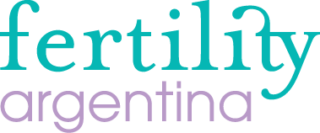The importance of shared decision making

Last week I was invited to participate in a Latin American meeting where, in expert tables, we had to set guidelines that would support professionals to manage different clinical situations. It was very interesting because I had the opportunity to discuss with other doctors on technical aspects of the treatments. But what struck me most is that many did not share the way of patient care. This means, what we say and how we influence on our patients when they have to take a decision for carrying out a treatment.
How do we choose to transfer one embryo or two? When I transfer two, pregnancy rate per transfer increases, but also increases the rate of complications … how do I choose? How do we put a top limit at the women age to cryopreserve oocytes? Who can say that 20% is good enough and 10% is not? And if for others the cut-off should be 30%? Or 5%?
Many, many years ago, medicine was paternalist. That is, the doctor (who has the knowledge) was the one who decided what to do, and the patient (who does not know anything about it) accepted what the doctor said. Fortunately, this has changed a lot in the last 20 years. Not only because of Internet which brings a lot of information quickly and where the patient has an easy source (be careful with this because the vast majority is not filtered and therefore the scientific background information is not clear), but mainly because there was a democratization of knowledge, where doctors share what we know with our patients, and thus it is more equitable in terms of making decisions. It is known as shared decision making.
What is shared decision making? It is the conversation that takes place between the patient and the health professional to come to a decision together. This process requires that both parties understand what is important to the other person to make decisions for treatment. This arises from the better known “evidence based medicine” where treatments are chosen according to the published scientific evidence, the experience of the physician and patient preferences. The shared decision-making honors both professional knowledge and the rights of patients to be fully informed of all treatment options with their potential harms and benefits. This process ultimately gives patients the support they need to make the best individualized decision, offering professionals the peace of being helping patients considering all relevant aspects of the decision.
It is important that the paternalism of yesteryear be shelved because it puts both parties (doctor and patient) in unequal conditions and, therefore, gives more value to the knowledge and preferences of the physician to the values and preferences of the patients. Both sides are important. It is laborious but our job as doctors is to take the time to transmit scientific evidence and listen to patients’ needs (which are not always the same, and which in many cases, do not coincide with what we ourselves had chosen). If we do that, we’ll be making a fuller medicine, helping more people, understanding that things look differently depending on who is the one who looks and, therefore, the need for individualized treatment. Personally, I have worked some time in the development of tools to help us in this task. Hopefully, they will soon be available to everyone.
Finally, I want to emphasize our duty as physicians. It is our duty to present the available evidence clearly so that the patient can choose, based on this information and adding their own values in the decision.


